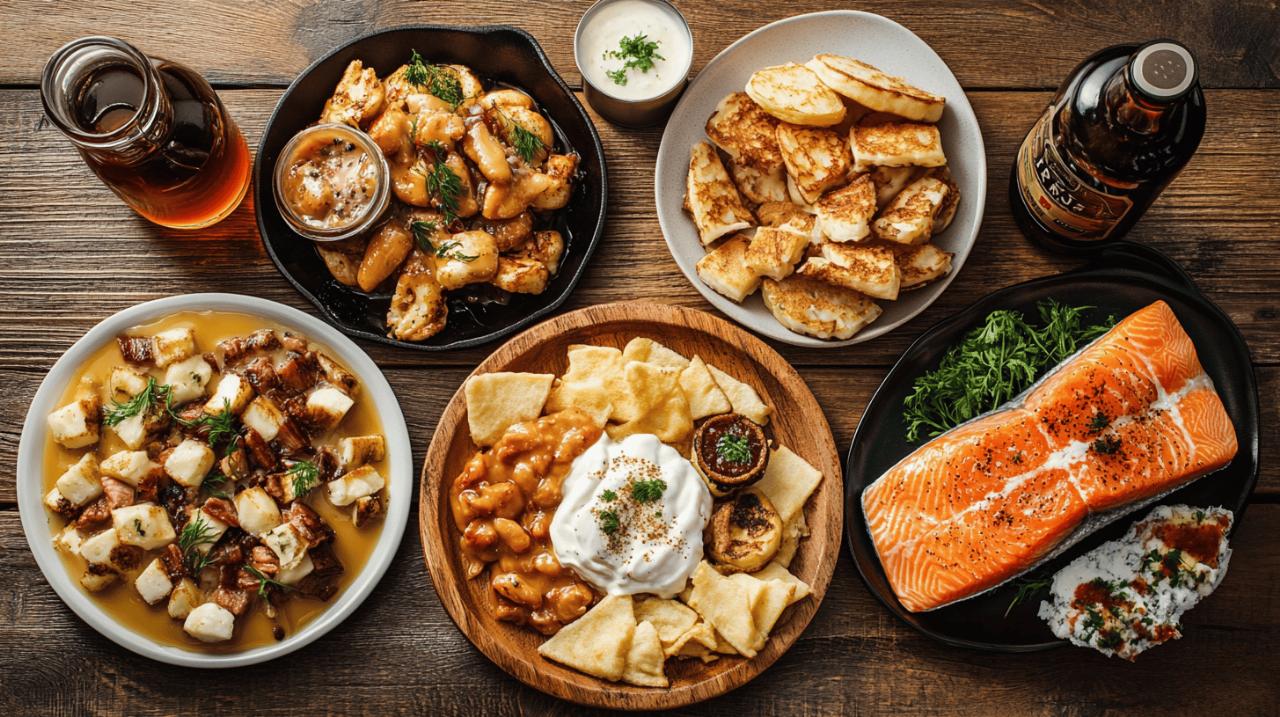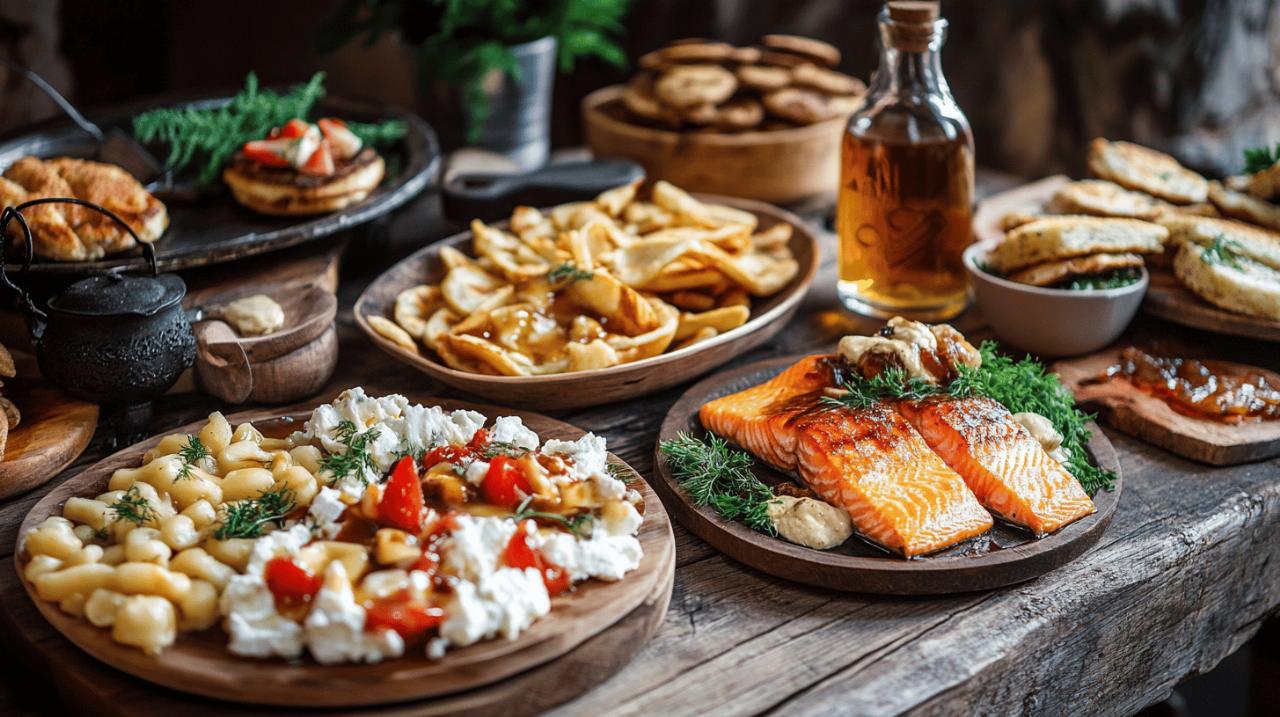Foods to Savour During Your Stay in Canada
Canada's culinary landscape is as diverse as its geography, offering visitors a chance to embark on a flavourful journey from coast to coast. Whether you're exploring bustling city centres or quaint rural towns, the country's food scene provides a delicious reflection of its cultural heritage and natural bounty. During your Canadian adventure, make time to savour these distinctive dishes that showcase the nation's gastronomic identity.
Iconic canadian comfort foods
Canadian comfort foods represent the heart and soul of the country's cuisine, providing warmth and satisfaction particularly during the harsh winter months. These dishes have evolved over generations, influenced by the diverse communities that call Canada home, yet maintain a distinctly Canadian character that makes them special to locals and visitors alike.
The beloved poutine from quebec
No culinary journey through Canada would be complete without sampling poutine, Quebec's most famous contribution to Canadian cuisine. This hearty dish features crispy chips topped with squeaky cheese curds and smothered in rich gravy. While originating as humble street food, poutine has evolved into a national treasure that appears on menus across the country, from casual diners to upscale restaurants. For the most authentic experience, seek out establishments using traditional Canadian cheese curds, which provide that distinctive 'squeak' when bitten into—a sign of freshness prized by poutine aficionados.
Hearty tourtière: a traditional meat pie experience
Tourtière represents the essence of French-Canadian comfort food. This traditional spiced meat pie from Quebec is typically enjoyed during festive winter gatherings but can be found year-round. The flaky pastry encases a savoury filling of minced meat—often a combination of pork, beef, and game—seasoned with warming spices like cinnamon, cloves, and allspice. Regional variations exist throughout Quebec and beyond, with coastal areas sometimes incorporating seafood. Paired with a glass of local cider or wine, tourtière offers visitors a taste of Canadian culinary heritage that has sustained generations through long winter months.
Sweet Treats from the Great White North
Canadian desserts offer a glimpse into the country's sweet side, often showcasing local ingredients and traditional techniques passed down through generations. These treats reflect the nation's agricultural abundance and the creativity of its people in crafting distinctive confections that satisfy the sweet tooth while telling a story of Canadian culture.
Ontario's flaky butter tarts
Butter tarts stand as one of Canada's most beloved desserts, particularly cherished in Ontario where they originated. These delectable pastries feature a flaky crust filled with a sweet, gooey centre made from butter, sugar, and eggs. The filling caramelises during baking, creating a luscious texture that can range from firm to delightfully runny, depending on the baker's preference. A friendly debate continues among Canadians about whether traditional butter tarts should include raisins or nuts. For a truly Canadian experience, sample these sweet treats at local bakeries, where artisanal bakers often put their unique spin on this classic dessert, sometimes incorporating Canadian cheese for a savoury contrast.
Pure canadian maple syrup delights
Maple syrup represents perhaps the most iconic Canadian food product, deeply rooted in the country's history and cultural identity. Canada produces roughly 80% of the world's maple syrup, with Quebec leading production. Beyond the classic pairing with pancakes and waffles, pure Canadian maple syrup appears in countless dishes across the culinary spectrum. Chefs incorporate this amber elixir into everything from glazes for roasted vegetables to marinades for meats. Sweet applications include maple taffy (made by pouring hot syrup onto snow), maple butter, and maple-infused confections. For a memorable experience, visit a sugar shack during harvesting season to witness production firsthand and enjoy traditional maple-focused meals that celebrate this quintessential Canadian ingredient.
Coastal delicacies worth trying
 With the world's longest coastline touching three oceans, Canada offers an impressive array of seafood delicacies. The maritime provinces on the Atlantic and the coastal communities of British Columbia have developed distinctive culinary traditions around their abundant marine harvests, creating dishes that showcase the freshness and quality of Canadian seafood.
With the world's longest coastline touching three oceans, Canada offers an impressive array of seafood delicacies. The maritime provinces on the Atlantic and the coastal communities of British Columbia have developed distinctive culinary traditions around their abundant marine harvests, creating dishes that showcase the freshness and quality of Canadian seafood.
Succulent atlantic lobster
Atlantic lobster represents the crown jewel of Canada's east coast seafood offerings. Harvested from the cold, clean waters off Nova Scotia, New Brunswick, and Prince Edward Island, Canadian lobster is celebrated worldwide for its sweet, tender meat. The traditional preparation remains simple yet perfect—lobster boiled or steamed just until done, then served with clarified butter for dipping. Coastal towns host lobster suppers where visitors can enjoy this delicacy in an authentic setting, often accompanied by local side dishes. Beyond the classic preparation, innovative chefs across Canada incorporate lobster into pasta, rolls, bisques, and more sophisticated presentations, though purists maintain that simple preparation best honours the lobster's natural flavour.
Fresh seafood pairings with local wines
Canada's developing wine regions provide excellent companions to its coastal seafood treasures. In British Columbia, aromatic whites from the Okanagan Valley pair beautifully with the region's fresh oysters, spot prawns, and salmon. Meanwhile, Nova Scotia's emerging wine industry produces crisp, mineral-driven wines that complement the Atlantic's bounty perfectly. For cheese enthusiasts, British Columbia offers remarkable artisanal options like White Juliette, a goat's milk Camembert-style cheese that pairs wonderfully with seafood platters. Ontario's wine country provides vibrant Chardonnays that enhance the sweetness of lobster and crab. These regional pairings allow visitors to experience how Canada's terroir—both land and sea—creates harmonious flavour combinations that celebrate local produce and craftsmanship.
Regional specialities across canada
Canada's vast geography has fostered distinct regional food cultures across its provinces and territories. From the Pacific to the Atlantic, each region boasts specialities shaped by local ingredients, settlement patterns, and cultural influences. Exploring these regional differences offers visitors insight into Canada's diverse culinary heritage.
East coast vs west coast culinary differences
The contrasting food traditions of Canada's eastern and western coasts reflect their different histories, climates, and influences. The Atlantic provinces embrace hearty, rustic fare centred around seafood like Avonlea Clothbound Cheddar from Prince Edward Island, aged for at least one year and made from raw cow's milk. Specialities include Acadian rappie pie, salt cod dishes, and the aforementioned Atlantic lobster. Meanwhile, British Columbia's cuisine shows stronger Asian influences, particularly in Vancouver where fresh Pacific seafood meets innovative fusion cooking. West Coast specialities feature ingredients like spot prawns, Dungeness crab, and sockeye salmon, often prepared with lighter, more global flavour profiles. The cheese scene differs too—British Columbia produces outstanding options like Tiger Blue, a distinctive cow's milk blue cheese that exemplifies the province's artisanal approach to dairy.
Cultural influences on canadian cuisine
Canadian cuisine reflects centuries of immigration and cultural exchange, creating a rich tapestry of flavours across the country. Quebec's food scene remains strongly influenced by French traditions, evident in cheeses like Cendre de Lune, a luxurious triple crème from Quebec made from cow's milk, and La Galette de la Table Ronde, an organic washed-rind cheese with distinctive character. Ontario's diverse population has created a multicultural food landscape, particularly in Toronto, where global cuisines thrive alongside local specialities like Lindsay Bandaged Goat Cheddar, aged for 12 months. Indigenous culinary traditions are experiencing a renaissance, with chefs across Canada incorporating traditional ingredients like game meats, foraged plants, and preparation methods that honour these ancient food cultures. The prairies maintain strong Ukrainian and Eastern European influences, while coastal regions reflect historical ties to British, Portuguese, and Asian fishing traditions. This cultural mosaic makes Canadian cuisine uniquely diverse, offering visitors an opportunity to taste the world while exploring distinctly Canadian interpretations.










